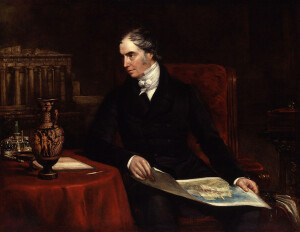
Found at Jot HQ, the pamphlet published by Winfred A. Meyers ,a well known dealer in autograph letters and manuscripts, containing the talk she gave at the ABA Book Fair at Albemarle Street, London, in 1961 on ‘ How to Collect Autograph Letters and Manuscripts ‘.
Meyers sets off by making a good case for collecting autograph letters from a historical point of view. She argues that a letter or set of letters may help a ‘professional’ scholar piece together episodes in the life of a particular person, possibly solving a puzzle that has perplexed other scholars for years; letters can also immediately connect an amateur with the author of a work in that person’s library. So far, so good. These are obvious benefits of collecting autograph letters. Meyers then comes to the horror stories of letters and historical documents lost, irretrievably damaged through neglect, or deliberately destroyed. What she tells us is indeed a litany of terrible losses:
‘…it is amazing after what has befallen letters and documents in the not so distant past, how much has survived. The rats that gnawed the letters from Elizabeth’s favourite courtier, at Belvoir Castle; the parish registers that turned into solid glue in the wet cellars of another stately home; Somerset House in 1840 sending the Exchequer Accounts of Henry VIII and the Secret Service Accounts of Queen Elizabeth to the waste paper merchant: the old India Office turning out the records of the Indian navy to the paper mills; the French Revolutionaries destroying and dispersing the papers of the Monarchy, and the restored Monarchy destroying the papers of the French Revolutionaries; the British army destroying the White House papers in 1812; the Southern States destroying their records before the advancing Union Army in the Civil War; the Sinn Feiners’ destruction of Dublin Castle records; the salvage drives and bombing of two wars; the mouldering records in a pigsty at Arundel Castle; the toy-drum and lampshade-makers’ part; Cassandra Austen tearing up the letters of her sister Jane, and George Washington’s widow tearing up all George’s letters to her and a terrible story I just heard of a collection of Emily and Charlotte Bronte letters that were torn up only last week…’
Unfortunately, Ms Meyers doesn’t say in which ‘stately home ‘ those gluey parish registers were found, who the ‘favourite courtier ‘of Queen Elizabeth was, what kind of records were discovered rotting away in a pigsty at Arundel Castle, or ( most shocking of all in this supposedly enlightened age ) the identity of the possibly deranged ignoramus who tore up the Bronte sisters’ letters in 1961. Thankfully, there are clues that may lead to more detailed accounts of the depredations and these may be followed in future Jots. Meanwhile, one act of vandalism that can be discussed is that which involved the destruction of some significant State documents from the time of Henry VIII, Elizabeth I and Charles I.
From around 1838, according to Hansard,it appears that the future of many boxes of Exchequer records rotting ( and probably being nibbled by rodents) in the damp vaults of Somerset House was being considered by the authorities. For some reason or other, these documents were not thought to be worthy of a more safe environment, but someone, quite rightly, felt that they ought to be examined to determine whether they were so much waste paper and could be sold as such , or were important records to be removed for safe keeping. Experts were hired to pore over the documents and report on their worth. One ( unnamed) arbiter was a man of 42 years in ‘ the public service’; the other two unnamed officers had individually racked up ten and twelve years experience. A report was duly issued by these persons and early in 1840 the unwanted documents were sent to the waste paper merchant. The whole affair was aired in the House of Lords, where Lord Monteagle, the Controller of the Exchequer announced that it had been decided that the destroyed documents were ‘for the most part duplicates of documents connected with ancient proceedings in the Exchequer’ and were ‘utterly worthless ‘.
This official declaration horrified Tory Lord Redesdale, celebrated for his shrewdness and independence, and an assiduous chairman of committees, who quite rightly argued that ‘ although they might be of little value to the Controller of the Exchequer, many persons of an antiquarian turn would be desirous of possessing them at a higher price than that of waste paper…’
Fast forward to 23rdMarch 1840 and a continuation of the Lords debate. Lord Aberdeen (picture above), a much travelled and cultivated former diplomat with a strong interest in classical civilisation and its archaeology, who would late become Prime Minister, revealed that:
‘ most of the papers which had been mutilated and sold were in the hands of auctioneers in the metropolis…(therefore) could not have been so worthless as the noble Lord had described them…a bookseller …had made up a lot for the purpose of selling them to the British Museum…’
It was scandalous, Aberdeen continued, that the public, through the auspices of the British Museum, should buy back their own records. One of the documents sold off as so much rubbish was a letter from the Papal Secretary of State to Leo X addressed to Cardinal Wolsey. Another was a 3 page list and description of the jewels bought for the use of Elizabeth I. Another ( not seen) was an account of the expenses of Charles I during his imprisonment. As Aberdeen rightly contended: “ History… was made up from such documents, and there was always a strong desire among the learned and wise to preserve them . He did not think that such papers ought to be sold or destroyed…”
To be continued…
- M. Healey
